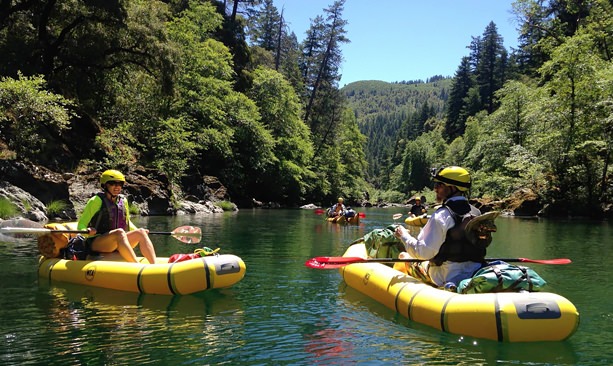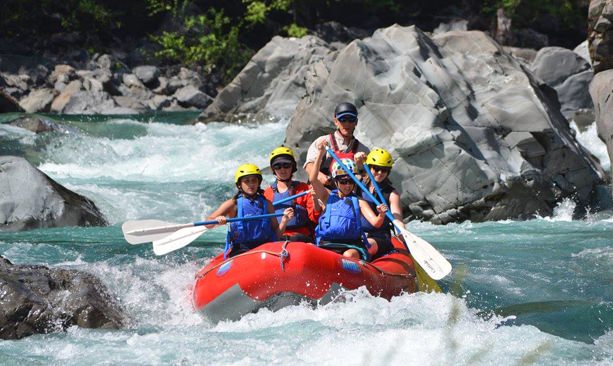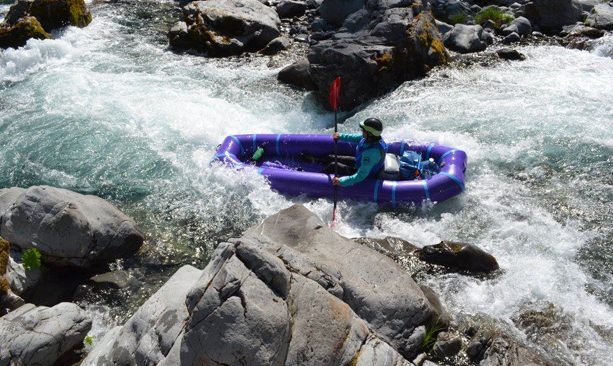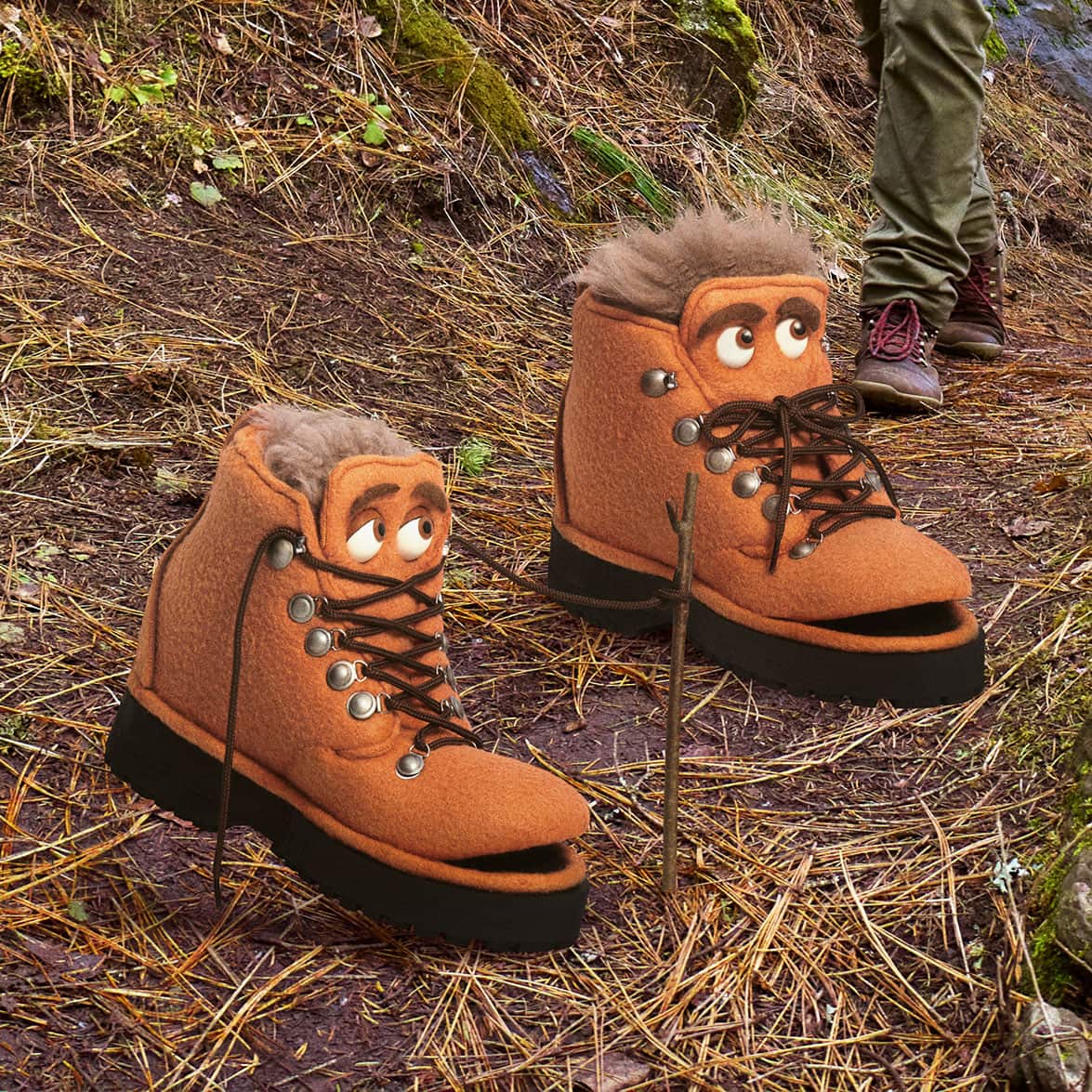Luke Martinez grew up splashing around in the Chetco River.
As a teenager he became passionate about paddling, and spent his summers guiding rafting trips.
That was 20 years ago, and Martinez has since returned home — to the tiny town of Pistol River, between Gold Beach and Brookings on the Southern Oregon Coast — to raise his family and do what he loves best.
Martinez, 37, now runs Wilderness Canyon Adventures, a rafting company that leads trips May through October down the Wild and Scenic Chetco River, which has been having its day in the sun lately.
Wilderness Canyon Adventures is a true family affair. Martinez’s wife, Charlotte Buchanan, prepares the organic meals, and they see their daughters, 8 and 5, as future guides. Martinez’s childhood mentor — Gold Beach native and rafting legend Allen Wilson, 70 — also helps lead trips, along with two other guides. Martinez bought the company from Wilson after the devastating 2002 Biscuit Fire in the area forced Wilson to shut down operations.
The Chetco is a 55-mile stream that stretches east to west, its headwaters in the Kalmiopsis Wilderness, deep off the beaten path in the Rogue River-Siskiyou National Forest, to the Pacific Ocean near Brookings.
When Oregon has so many stunning waterways to visit and recreate at — the Deschutes, Umpqua, Rogue, Metolius and Owyhee rivers, just to name a few — what’s so magical about the lesser-known Chetco?
Martinez shares with us his top four reasons to love the Chetco River:
- It’s Wild and Scenic — and as clear as gin.
Just five miles north of the border, visitors can see the northernmost Redwood grove in the continental United States at one section just above Alfred A. Loeb State Park. The rapids range from Class 4 to Class 1 as they cascade down through the metamorphic rock in the canyons, creating magnificent boulder fields. The river’s water comes from rainfall, which means its water quality and clarity are unmatched, Martinez says: “At the river bottom there’s pinks, browns and silvers that interact with the turquoise-green, clear water. I call it gin-clear. There’s not many rivers where you can see through a 25-foot pool all the way to the bottom.”
- It’s pristine and protected for generations to come.
Forty-four miles of it is protected as a National Wild and Scenic River, and earlier this year Oregon Gov. Kate Brown included the Chetco in the Oregon Scenic Waterways Program, strengthening protections for generations to come. That means the Oregon Parks and Recreation Department requires advance notification and approval of all logging, mining and the construction of roads, utilities, buildings and other structures within a quarter-mile of the river. “It’s a badge of honor,” Martinez says of the recognition. “I have a moral value with how many groups I bring into this area.” He limits his trips to once every week or two, keeps his group sizes to eight people, and follows a strict “leave no trace” policy.
- The “Chetco Effect” means you’ll never want to leave.
Martinez runs one- to four-day, all-inclusive inflatable kayak trips along the harder-to-reach upper Chetco River gorges, immersing visitors (especially novices) in something he calls the “Chetco Effect.” He says, “Once you spend more than a couple days in the upper Chetco, you don’t want to leave.” Just one other operation, Hood River-based NW Rafting Company, runs tours along the Chetco. During the summer, water sports dominate the south fork of the river, which is easier to access. In the fall and winter it’s a hotspot for chinook and steelhead fishing.
- It’s remote — and that makes it feel undiscovered.
As a South Coast native, Martinez knows that being geographically isolated makes the Chetco a more difficult destination to reach from Portland. But this also makes it feel undiscovered, and it’s one reason travelers seeking solace are making the trip. Once a heavy timber and fishing industry, the area is now relying more and more on tourism. Martinez is feeling the love, as he sees more visitors to this coastal region dubbed Oregon’s Banana Belt (named for the warmer temperatures year-round). “It’s a hard place to get to,” Martinez admits. “If you really want it, you’re really going to have to get to it.”
In September and October 2017, areas around the Rogue River and Siskiyou National Forest were closed to visitors due to the Chetco Bar Fire. The wildfire burned close to 200,000 acres but was fully contained as of late October. Those communities are once again welcoming visitors and most public sites and tour businesses are open, but call before you travel.



